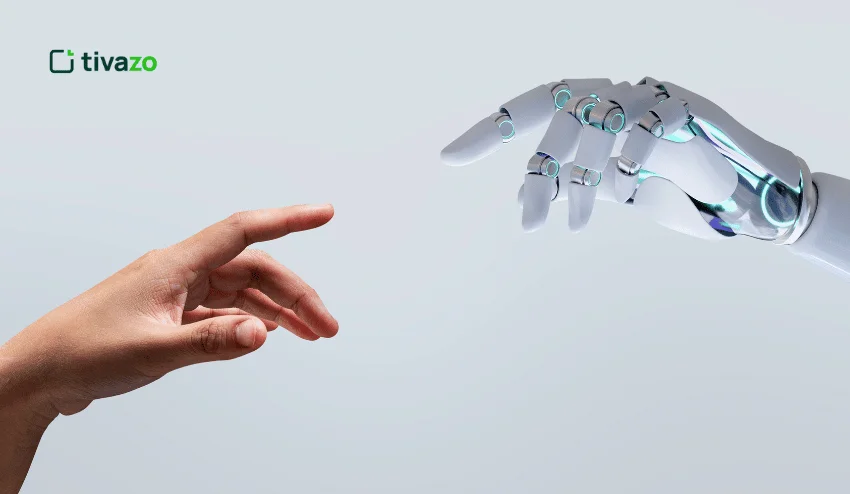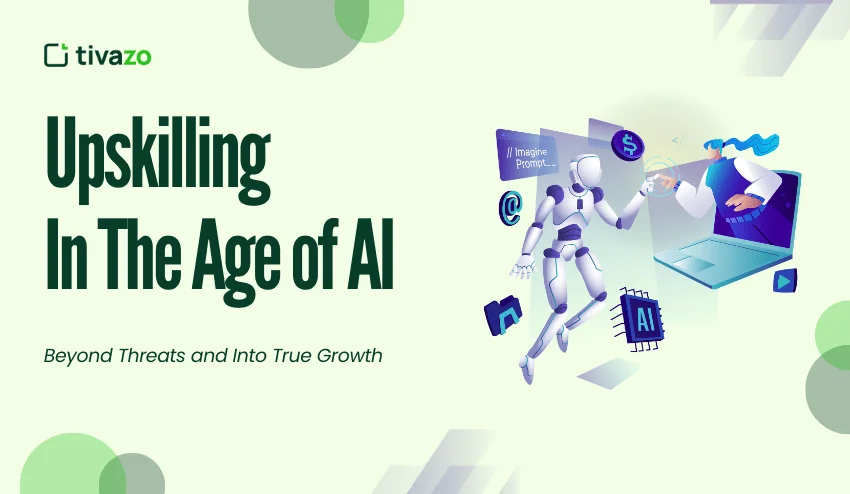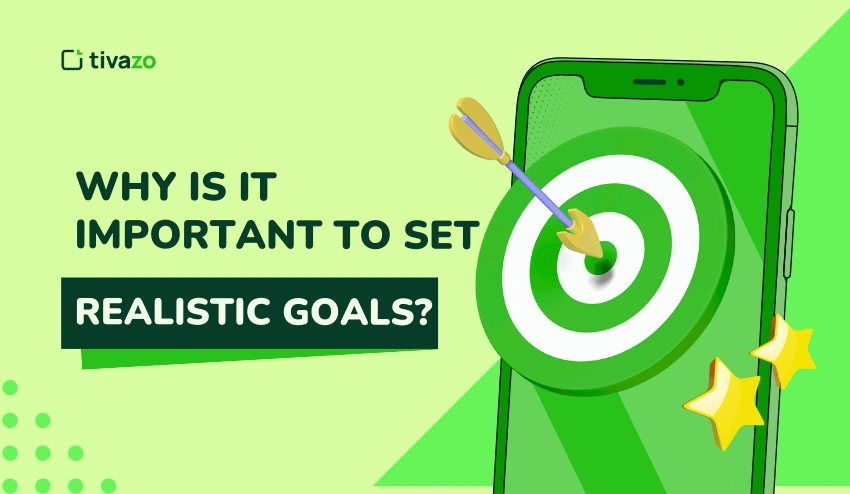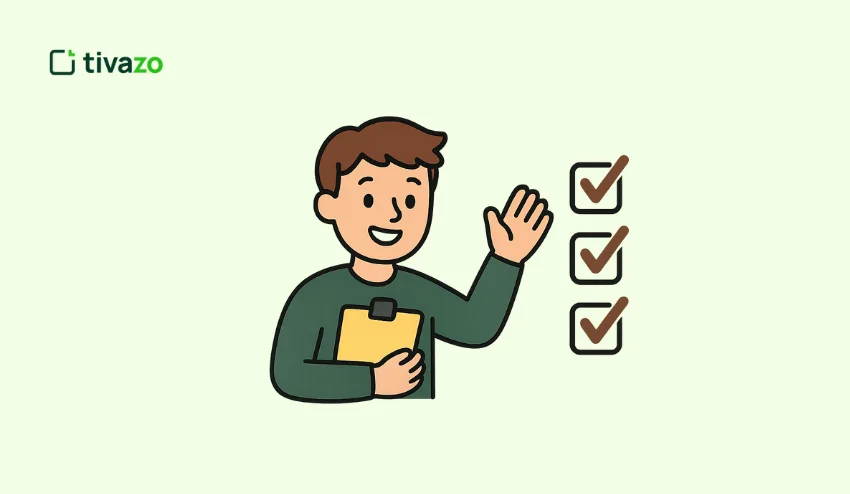Upskilling in the Age of AI? If not, AI is causing significant anxiety among workforces, but some leaders are using this to motivate employees to increase productivity.
These organizations are telling staff: ‘learn to work with AI through the training we provide, or face being replaced by the technology we are encouraging you to adopt.’ There are ethical considerations for this approach, and it is likely to cause a negative culture of resentment, but still, some enterprises push on with it regardless.
This article explores what organizations are doing to motivate staff to adopt the Age of AI technologies. It also examines alternatives that may be more effective in encouraging AI adoption, promoting a continuous learning culture through collaborative tools rather than fostering a culture of coercion and fear, which would only lead to low employee retention.
Key Highlights:
- The Pitfalls of Fear-Based The Age of AI Motivation
- Culture of Continuous Learning
- Smart Ways to Upskill in the Age of AI
- Tools That Support Collaborative Upskilling
- Redefining Leadership in the Age of AI
The Pitfalls of Fear-Based The Age of AI Motivation

Many managers today are using AI as a weapon against employees. Rather than encouraging adoption and engagement with AI by offering robust training programs that are enjoyable to experience, some managers are threatening employees with replacement by AI if they don’t learn how to use tools that use this technology.
In the short term, this might raise engagement levels through the roof, as fear is one of the most effective motivators, and people don’t want to lose their jobs. However, in the long term, this approach promotes resentment toward managers, which is challenging to undo, and damages to trust in the organization and higher morale.
This is how it looks in reality: A manager demonstrated how AI might replace employees to pressure them into training. However, an employee retorted, asking whether managers could also be replaced, exposing the tactic’s irony.
Building a Culture of Continuous Learning
The alternative to the fear-based approach to AI adoption is to take the time and a more human-focused approach to build a culture of continuous learning that employees engage with naturally because they enjoy it and feel it works for them on an individual level.
This approach moves from fear to empowerment as a motivator, and although it takes more money and time, it is much better for organizational goals and employee retention and wellness in the long run.
A continuous learning culture involves:
- Providing clear learning pathways: Structured, transparent learning paths empower employees to grow consistently and remain engaged.
- Mentorship: Mentorship fosters guidance, knowledge sharing, and confidence, supporting employees in achieving continuous professional development.
- Time for skill development: Dedicated skill-building time ensures employees practice, apply, and strengthen abilities for ongoing growth. This reduces skill issues.
What is the role of leadership in this new culture? They must set the tone for the attitude toward continuous learning, modeling their adaptability in changing times, and how they constantly engage in training to learn how new technologies work.
5 Smart Ways to Upskill in the Age of AI
5 Smart Ways to Upskill in the Age of AI are:

1 Avoid Fear-Based Age AI Motivation
Fear can sometimes move employees towards AI adoption and utilization, but it can eliminate trust and morale in the future. Organizations should focus on empowering people with support and encouragement. Employees will respond better when they feel valued and safe rather than being threatened, and approach any new technology with more energy, better retention, and a willingness to adapt. Leaders should show employees AI as a way to help them, not a replacement for them.
2 Build a Continuous Learning Culture
A continuous learning culture keeps employees engaged in learning and also keeps them prepared for change. Make learning pathways clear, such as mentors, and provide employees with scheduled time to work on skill-based learning to allow for structured growth. A continuous learning culture allows employees to become more engaged with their own learning and recognize that their organization is supporting them, instilling confidence, engagement and continuity in their development and professionalization. Leaders in organizations are key to making culture work with the learning process, so demonstrating adaptability, continuous learning, and commitment are crucial. Over time organizations can expect to see more engaged employees, as well as organizational success.
3 Leverage Collaborative Tools
Collaborative tools enhance the learning experience by making the process active and more valuable. Collaborative tools that drive peer learning, drive microlearning and promote sharing of knowledge facilitate the uptake of knowledge quickly and allow for its application back in the workplace. Collaborative tools also promote collaboration and exchange of ideas and co-solving of problems. For example, communications programs such as MS Teams or Slack promote and engage us all in real-time, while offering collaboration. When an organisation leverages these professional social tools and environments, it creates opportunities to continually immerse in a learning environment.
4 Blend AI With Human Creativity
AI has to be positioned as an aide or a tool and not a replacement. When AI is combined with human creativity, this can create efficiencies that enhance our productivity and job satisfaction. For example, generative AI can create a draft of content or visuals, while humans refine and apply creative analytics, judgment, or insights. When AI and humans collaborate, this enables employees to do even higher-value work and develop new learning opportunities. By differentiating the supportive role of AI, employees can feel less anxiety and fear about the future and engage in a positive manner.
5. Lead with Empathy and Vision
Leaders can be vulnerable to AI too. For this reason, empathy and having a vision are critical skill sets that help leaders. Leaders build trust and resilience when they help employees traverse the uncertainty of incorporating AI with empathy and vision. Importantly, leaders should show how they are adaptable and how technology enhances their work instead of makes it obsolete. If leaders practice empathy for employees, employees will remain vested in their work and will be motivated to do well. Leaders who provide a clear vision and act as empathetic role models help create a community of support for growing, building, collaborating, and continually improving.
Tools That Support Collaborative Upskilling
The best way to achieve a continuous learning culture and move toward empowerment as a motivator is by using platforms that promote collaborative upskilling.

- Peer learning: Peer learning encourages collaboration, shared experiences, and collective problem-solving, fostering continuous professional growth.
- Microlearning: Microlearning delivers focused, bite-sized lessons, making knowledge easier to absorb, retain, and apply continuously.
- Knowledge sharing: Knowledge sharing builds openness, spreads expertise, and ensures collective learning becomes part of daily routines.
The best employee communication apps are also a big part of this collaborative culture because they enable transparent, real-time dialogue around skills development and act as a way to let employees know about new training programs.
Some of the best examples of these apps are familiar to most employees already, including MS Teams, Slack, and specialized learning platforms that integrate with daily workflows.
Balancing the Age of AI Assistance With Human Creativity
It’s useful to show employees that it’s not one or the other: AI or humans. AI assistance can blend perfectly with human creativity for amazing results for the job satisfaction of individual employees and organizational outcomes. When this happens, staff see that AI is a partner, not a replacement.
AI tools like ChatGPT can produce text and images. Marketing teams can use these to make advertising literature or mock-up drafts to send to design teams to produce the final product.
Redefining Leadership in the Age of AI
The cold, hard truth that managers must remember is that they are just as vulnerable to AI replacement as employees. Most tasks can be automated, and therefore most people can be replaced by AI.
The best way for leaders to respond to this fact is by practicing empathy, strategy, and vision in their communication and contributions to their organization. These are, after all, skills that AI can never replicate. Leaders can use these skills to guide and not intimidate employees during rapid and intensive digital transformations like the current AI shift.
How AI Can Empower Employee Productivity
AI is viewed as a threat; when properly positioned, AI can elevate employee productivity and job satisfaction. By using AI as a tool for support and not as a replacement, organizations can help employees to focus on high-value, meaningful work. When employees see AI handling redundant or time-consuming tasks, they are relieved of that weight and are able to contribute in more creative and strategic ways with confidence and less anxiety. Here are some ways to effectively empower employees through AI:
- It illustrates that AI is a partner and not a replacement for the employee.
- It exemplifies how AI tools such as ChatGPT, design mock-ups, or automating redundant tasks may occur.
- It can prompt employees to focus on high-value work, knowing that AI is doing mundane work.
- It can reduce employee concerns about job security and increase engagement.
- It shows how AI enhances creativity and efficiency in day-to-day tasks.
Conclusion
Fear-driven strategies sound effective on paper, and they are in the short term. But they require minimal effort and have a devastating long-term impact on engagement and retention.
True growth, on the other hand, blooms when managers promote empowerment, strong communication, and the concept of AI as an enabler by demonstrating its capabilities, making it a partner, not a competitor.
The best approach for organizations is to embrace upskilling as a shared journey, not a reactive, last-minute survival tactic.




